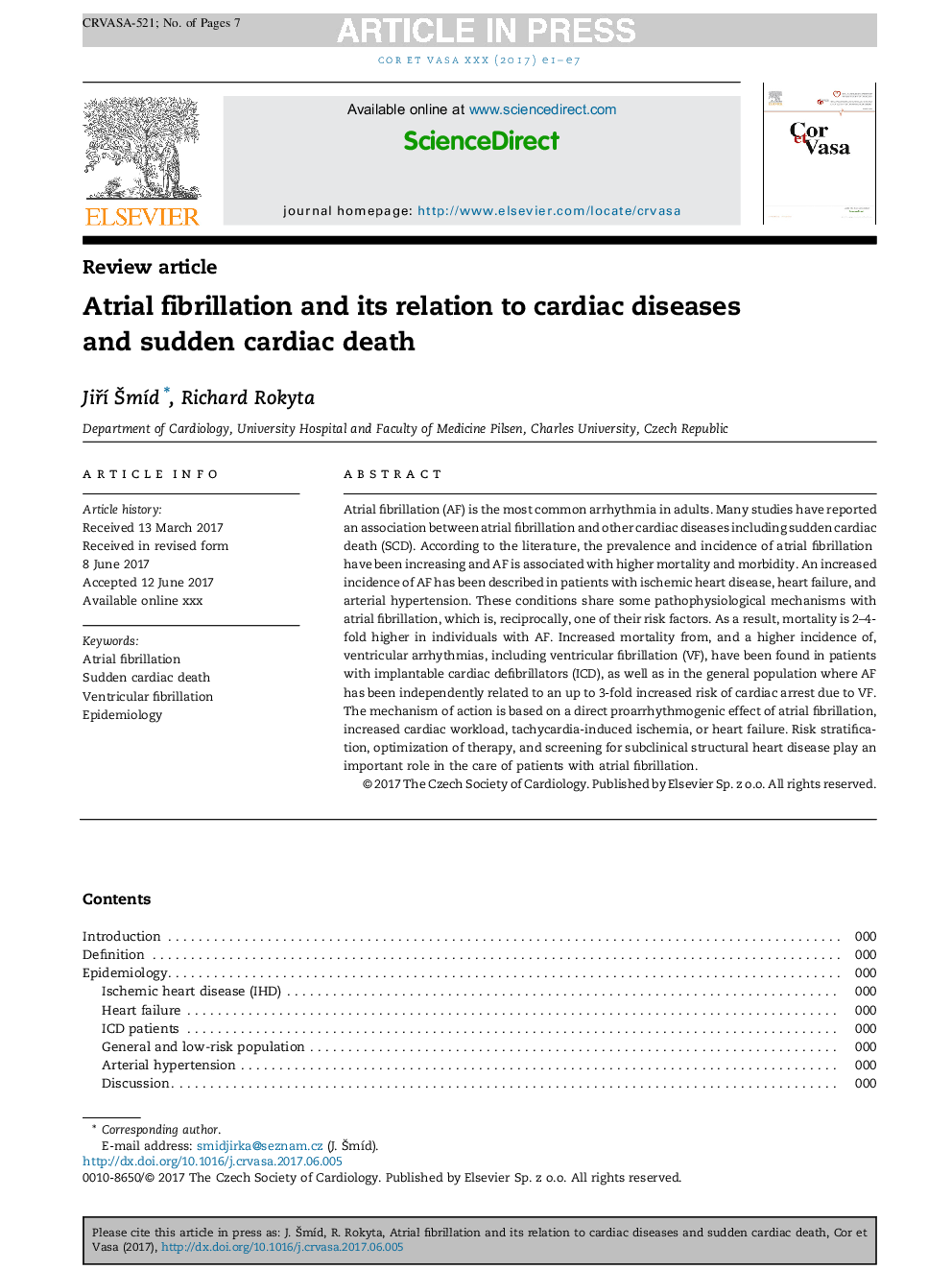| Article ID | Journal | Published Year | Pages | File Type |
|---|---|---|---|---|
| 5577775 | Cor et Vasa | 2017 | 7 Pages |
Abstract
Atrial fibrillation (AF) is the most common arrhythmia in adults. Many studies have reported an association between atrial fibrillation and other cardiac diseases including sudden cardiac death (SCD). According to the literature, the prevalence and incidence of atrial fibrillation have been increasing and AF is associated with higher mortality and morbidity. An increased incidence of AF has been described in patients with ischemic heart disease, heart failure, and arterial hypertension. These conditions share some pathophysiological mechanisms with atrial fibrillation, which is, reciprocally, one of their risk factors. As a result, mortality is 2-4-fold higher in individuals with AF. Increased mortality from, and a higher incidence of, ventricular arrhythmias, including ventricular fibrillation (VF), have been found in patients with implantable cardiac defibrillators (ICD), as well as in the general population where AF has been independently related to an up to 3-fold increased risk of cardiac arrest due to VF. The mechanism of action is based on a direct proarrhythmogenic effect of atrial fibrillation, increased cardiac workload, tachycardia-induced ischemia, or heart failure. Risk stratification, optimization of therapy, and screening for subclinical structural heart disease play an important role in the care of patients with atrial fibrillation.
Related Topics
Health Sciences
Medicine and Dentistry
Cardiology and Cardiovascular Medicine
Authors
JiÅÃ Å mÃd, Richard Rokyta,
